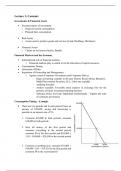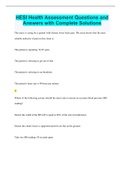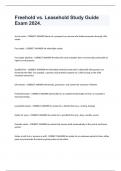Summary
Concise summary of all lectures of Investment Analysis - MSc Finance - Tilburg University
- Course
- Institution
This is a concise summary of all lectures of Investment Analysis at Tilburg University - MSc Finance. This summary will save you time in learning for the exam, because it mitigates the unnecessary parts of the lectures and give you a to the point view of what you need to know for the test. Good luc...
[Show more]







